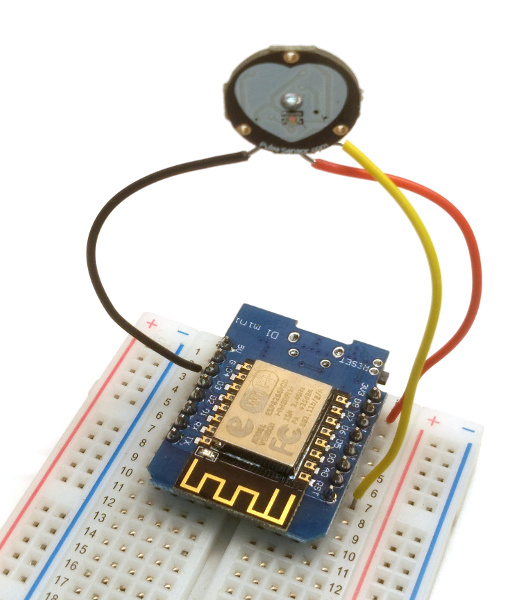Pulse sensors have become popular due to their use in health-monitors like the Fitbit. The sensors used are cheap, simple and pretty reliable at getting a reasonable indication of heart rate in daily use. They work by sensing the change in light absorption or reflection by blood as it pulses through your arteries — a technique jauntily named photoplethysmography (PPG). The rising and falling light signal can be used to identify the pulse, and subsequently, calculate heart rate.
Most commercial sensors (Fitbit, etc.) use green-light based sensors and similar sensors are available for use in your own projects. In this project we’re taking a Pulsesensor.com sensor and using it to build a working heart monitor with OLED pulse, BPM and trace display, using MicroPython on a Wemos D1.
Wiring up the sensor
In this project we’re using an Wemos D1 and a Pulsesensor.com heart rate sensor, but other boards and sensors will also work fine. Wire up the sensor as follows, with the signal (S) pin connected to your board’s analoge input.
Detecting a peak by sight is straightforward: the signal rises on a beat, and falls between beats, repeatedly reaching maximum and minimum values. However, biological variability makes things doing this automatically a little trickier. Firstly, the maximum and minimum values are affected by multiple things including ambient light, skin colour, depth and size of blood vessels. Secondly, the magnitude of the peaks is affected by the strength of the pulse, and depth of any arteries. Thirdly, the distance between peaks is non-constant: even for a perfectly healthy person, the heart will occasionally skip beats, or the sensor will miss them.
To detect the beat we have a couple of options —
- Detect the signal being over/under a threshold. Simple to implement, but the threshold must adjust to account for use variation.
- Detect the signal rising or falling (for N number of ticks) Bit trickier to implement, less affected by threshold issues, more affected by noise (transient dips).
Here we’re going to use the first method, accounting for variation by using a pair of auto-adjusting threshold. We will count a pulse when the value rises 3/4 of the way to the current maximum and a pulse ends when the value falls below 1/2 of the current maximum.
Optimization
To understand why these values were selected, see the following plots. Below is a plot of pulse data (blue) alongside maxima and minima (purple, red) and the current threshold for the given window (grey). This uses a windowsize of 50 samples, and as you can see the maxima & minima bounce around, pulling the threshold all over.
Read More: Building a MicroPython heart rate monitor | Finding the beat in HR sensor data

